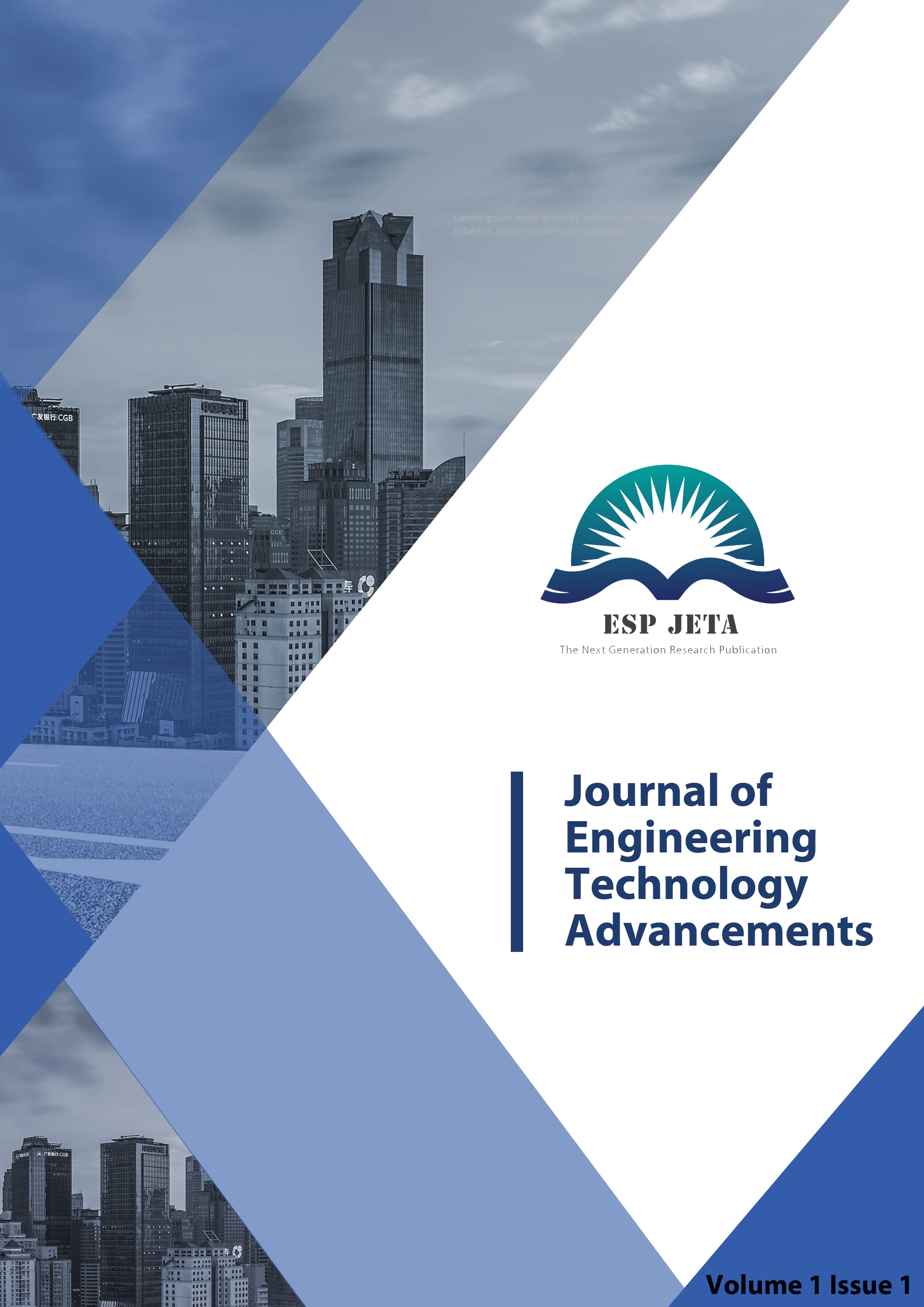Achieving Net-Zero Energy Buildings: The Strategic Role of HVAC Systems in Design and Implementation
| ESP Journal of Engineering & Technology Advancements |
| © 2022 by ESP JETA |
| Volume 2 Issue 1 |
| Year of Publication : 2023 |
| Authors : Ankitkumar Tejani, Jyoti Yadav, Vinay Toshniwal, Harsha Gajjar |
 : 10.56472/25832646/ESP-V2I1P107 : 10.56472/25832646/ESP-V2I1P107 |
Citation:
Ankitkumar Tejani, Jyoti Yadav, Vinay Toshniwal, Harsha Gajjar, 2022. "Achieving Net-Zero Energy Buildings: The Strategic Role of HVAC Systems in Design and Implementation", ESP Journal of Engineering & Technology Advancements, 2(1): 39-55.
Abstract:
The drive towards sustainable development has ensured that net-zero energy buildings NZEBs have become one of the elements of design in the current world. These buildings generate the amount of energy they use in a year, often by using renewable sources of power on the buildings’ own premises. HVAC systems are systems of balance in this sense because they bear the highest percentage of energy consumption in most buildings. This paper provides an investigation into the application of HVAC systems in the conceptualisation and realisation of NZEBs, an analysis of the advanced technologies, illustrative design approaches, and effective operational techniques in the enhancement of energy efficiency. The discussion also underlines the requirement of integrated design and energy modeling as well as proper identification of the optimal HVAC technologies applicable for NZEBs.
References:
[1] Attia, S., Eleftheriou, P., Xeni, F., Morlot, R., Ménézo, C., Kostopoulos, V., ... & Pagliano, L. (2017). Overview and future challenges of nearly zero energy buildings (NZEB) design in southern Europe. Energy and Buildings, 155, 439-458. https://doi.org/10.1016/j.enbuild.2017.09.043
[2] Cao, S., Hasan, A., & Sirén, K. (2014). Analysis and solution for renewable energy load matching for a zero energy house. Energy Conversion and Management, 75, 385-393. https://doi.org/10.1016/j.enconman.2013.06.039
[3] Marszal, A. J., & Heiselberg, P. (2011). Life cycle cost analysis of a multi-storey residential Net Zero Energy Building in Denmark. Energy, 36(9), 5600-5609. https://doi.org/10.1016/j.energy.2011.07.010
[4] Chastas, P., Theodosiou, T., & Bikas, D. (2016). Embodied energy in residential buildings-towards the nearly zero energy building: A literature review. Building and Environment, 105, 267-282. https://doi.org/10.1016/j.buildenv.2016.05.040
[5] Aelenei, L., & Gonçalves, H. (2014). From solar building design to Net Zero Energy Buildings: Performance insights of an office building. Energy Procedia, 48, 1236-1243. https://doi.org/10.1016/j.egypro.2014.02.140
[6] Wang, L., Gwilliam, J., & Jones, P. (2009). Case study of zero energy house design in UK. Energy and Buildings, 41(11), 1215-1222. https://doi.org/10.1016/j.enbuild.2009.07.001
[7] Attia, S., & De Herde, A. (2011). Early design simulation tools for net zero energy buildings: A comparison of ten tools. Frontiers of Architectural Research, 1(4), 287-297. https://doi.org/10.1016/j.foar.2012.09.004
[8] Probst, M. C. M., & Roecker, C. (2012). Architectural integration and design of solar thermal systems. Energy Procedia, 30, 1109-1118. https://doi.org/10.1016/j.egypro.2012.11.124
[9] Energy Recovery Ventilator (ERV): Installation, Types & Advantages, Linquip Technews, online. https://www.linquip.com/blog/energy-recovery-ventilator/
[10] Kılkış, Ş. (2012). A net-zero building application and its role in exergy-aware local energy strategies for sustainability. Energy Conversion and Management, 63, 208-217.
[11] Simpeh, E. K., Pillay, J. P. G., Ndihokubwayo, R., & Nalumu, D. J. (2022). Improving energy efficiency of HVAC systems in buildings: A review of best practices. International Journal of Building Pathology and Adaptation, 40(2), 165-182.
[12] Sustainable Building Methods - Net-Zero Energy Building, whereisthenorth, online. https://www.whereisthenorth.com/article/9-sustainable-building-methods---net-zero-energy-building
[13] 12 Passive Design Strategies for Cold Climate Architecture, whereisthenorth, online. https://www.whereisthenorth.com/article/%2012-passive-design-strategies-for-cold-climate-architecture
[14] 12 Passive Cooling Strategies for Hot Climate Architecture, whereisthenorth, https://www.whereisthenorth.com/article/%2012-passive-cooling-strategies-for-hot-climate-architecture
[15] Awan, R., & Rahid, A. (2014, November). HVAC design considerations for energy efficiency in commercial buildings. In 2014 International Conference on Energy Systems and Policies (ICESP) (pp. 1-7). IEEE.
[16] Hu, S. C., & Tsao, J. M. (2007). A comparative study on energy consumption for HVAC systems of high-tech FABs. Applied thermal engineering, 27(17-18), 2758-2766.
[17] Nguyen, A. T., Reiter, S., & Rigo, P. (2014). A review on simulation-based optimisation methods applied to building performance analysis. Applied Energy, 113, 1043-1058. https://doi.org/10.1016/j.apenergy.2013.08.061
[18] Voss, K., Sartori, I., Lollini, R., Noy, D., & Napolitano, A. (2012). Nearly-zero, Net zero and Plus Energy Buildings–How definitions & regulations affect the solutions. REHVA Journal, 49(3), 23-27. https://doi.org/10.3929/ethz-b-000433324
[19] Li, H., & Kwan, A. (2018). Analysing energy use in nearly zero-energy buildings: A survey of heating ventilation and air conditioning systems and indoor environment control. Sustainable Cities and Society, 38, 737-745. https://doi.org/10.1016/j.scs.2018.02.021
[20] Marszal, A. J., Bourrelle, J. S., & Gustavsen, A. (2010). Zero Energy Building–A review of definitions and calculation methodologies. Energy and Buildings, 43(4), 971-979. https://doi.org/10.1016/j.enbuild.2010.12.022
[21] Ankitkumar Tejani, 2021. "Assessing the Efficiency of Heat Pumps in Cold Climates: A Study Focused on Performance Metrics", ESP Journal of Engineering & Technology Advancements 1(1): 47-56.
[22] Ankitkumar Tejani, 2021. "Integrating Energy-Efficient HVAC Systems into Historical Buildings: Challenges and Solutions for Balancing Preservation and Modernization", ESP Journal of Engineering & Technology Advancements 1(1): 83-97.
[23] Ankitkumar Tejani, Jyoti Yadav, Vinay Toshniwal, Rashi Kandelwal, 2021. "Detailed Cost-Benefit Analysis of Geothermal HVAC Systems for Residential Applications: Assessing Economic and Performance Factors", ESP Journal of Engineering & Technology Advancements, 1(2): 101-115.
Keywords:
Net-zero energy buildings, HVAC systems, Energy efficiency, Renewable energy, Sustainable design, Integrated design process, Energy modeling.


